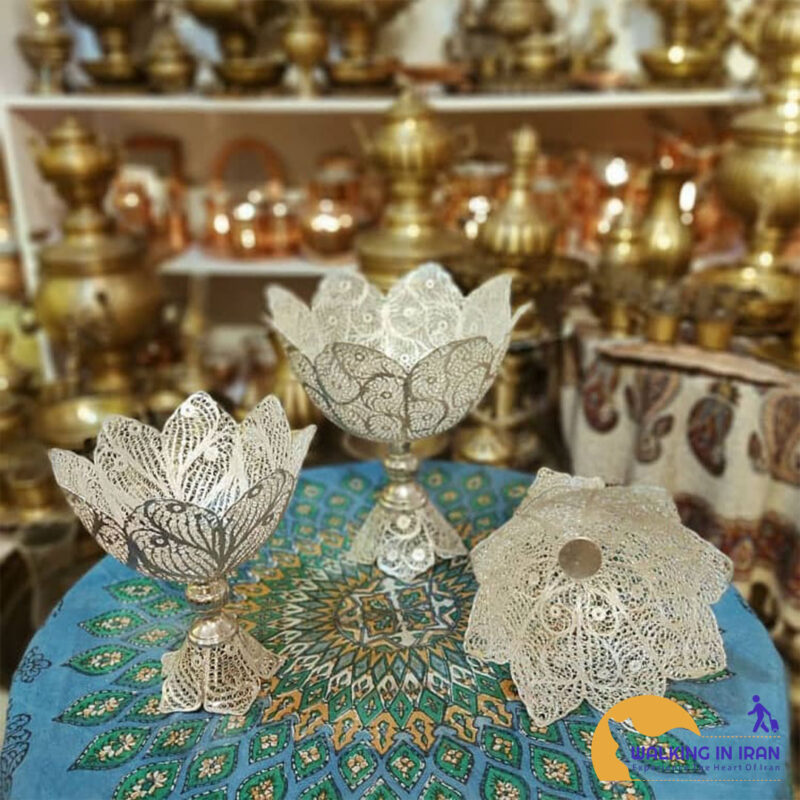The art of metalwork tapestry: the brilliance of elegance and beauty
Kari tapestry is one of the most delicate and valuable traditional arts of Iran, in which complex and beautiful designs are created on metal surfaces using thin strands of metals such as gold, silver, copper, etc. Due to its special elegance and brilliance, this art has been noticed for a long time and has been used in making ornaments, dishes and decorative objects.
A short history of tapestry work in Iran
Tapestry has a long history in Iran and has been used in making ornaments and decorative objects since ancient times. With the arrival of Islam in Iran, this art was influenced by Islamic art, and geometrical designs, plants and Kufi lines are abundantly seen in it. In different historical periods, tapestry work in Iran reached its peak of prosperity and unique works of Iranian artists have remained.
The steps of making tapestry work
Tapestry work is a time-consuming process that requires very high precision and skill. The main stages of tapestry work are:
- Preparation of tapestry threads: Tapestry threads are obtained by drawing thin metal wires.
- Designing the design: the desired design is placed on the metal surface.
- Soldering: tapestry strands are connected to each other using solder and form the desired design.
- Final payment: After the work is completed, the work surface is paid and polished.
Tools used in tapestry work
To do tapestry work, various tools are used such as pliers, scissors, tweezers, solder, torch and magnifying glass.
Tapestry applications
Tapestry objects have a variety of uses, including: - Jewelry: necklaces, bracelets, earrings and rings
- Dishes: cups, bowls, plates and other decorative dishes
- Decorative objects: mirrors and candlesticks, small boxes and other decorative objects
The importance of tapestry work in Iran
Kari tapestry is of special importance in Iran. This art is not only a valuable cultural heritage, but as a handicraft, it plays an important role in creating employment and economic prosperity. Also, as a living art, tapestry continues to evolve and innovate, and contemporary artists create new and creative works inspired by traditional designs and techniques.


